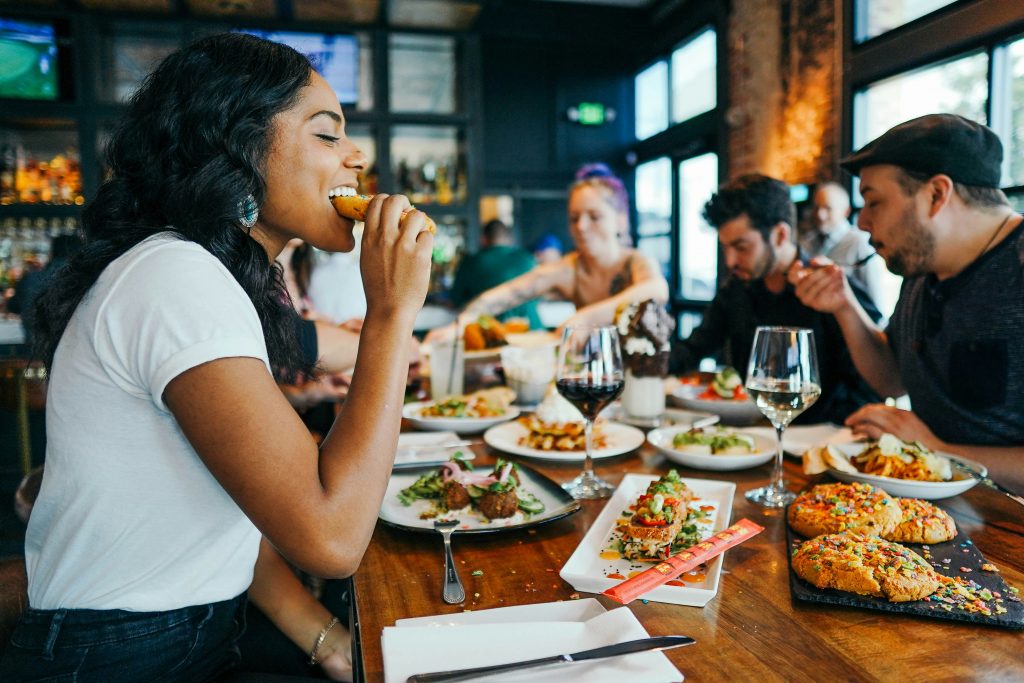
Jamie Oliver is plastered all over the news at the moment. He’s a man on a mission, determined to protect children from fast food marketing, calling on the government to introduce a 9pm TV advertising watershed for food and drink high in unhealthy fats, sugar and salt. He is also advocating for tighter controls on online advertising.
Healthier choices
The chef, who has previously campaigned for the recently-introduced sugar tax and to make school dinners healthier, says: “If kids are constantly being targeted with cheap, easily accessible, unhealthy junk food, just think how hard it must be to make better, healthier choices. We have to make it easier for children to make good decisions.
“These ads undermine any positive work we’re doing in schools or at home to tackle the rise of childhood obesity. Currently, there’s nothing in place to protect our kids from seeing these adverts – apart from literally covering their eyes! And that’s where our #AdEnough campaign comes in.”
He’s not the only one that thinks this. A much larger force is at work that could introduce changes affecting the entire world. United Nations (UN) health officials are considering stringent regulation to ban fast food chains from charitable work, sponsoring kids’ sports and selling products in schools and hospitals.
A worthy cause?
All this is in an effort to tackle the growing problem of child obesity, particularly in the US and UK. Most would agree this is a worthy cause. But are these the right solutions?
Some health campaigners and specialists believe this is the right approach. “I think a ban on fast food marketing to children is a great idea,” insists Jacqui McPeake, a food allergen expert at JACS in the UK. “I don’t believe having images of kids playing football or other sports with the KFC or McDonald’s logo on their shirts presents the right message. I know schools have budget restrictions, but there must be better ways of getting sponsorship.”
Likewise, she’s a supporter of Jamie Oliver’s campaign, believing children are inevitably going to be influenced by the adverts. “If they keep seeing images of the food, it’s going to make them want to eat it. Plus, it’s particularly bad when they’re promoting large sized portions everywhere. Something needs to be done. Diabetes and obesity is a massive problem,” adds McPeake.
Customer needs
But not all see a ban as a clear cut way of dealing with this problem. “I personally don’t think banning works well. These businesses need to make their own decisions based on their board and customer needs. They can offer ‘healthy’ items as well as less healthy,” says foodservice consultant Christine Guyott FCSI, and principal at Rippe Associates in Minneapolis, US.
“People get to make a choice on what they want to eat. As a dietitian, my motto is always ‘moderation’. I’ve never seen a fast food place sell things at a school. They do in hospitals, but again, this is their decision as a business. Most have taken them out for various reasons, one being that it is a bit hypocritical to have a fast food space in a place that is trying to promote health and has a commitment to wellness in their community.”
Good sports?
Although schools in the UK aren’t tied to third-party arrangements with fast food chains on site, there are still McDonald’s, Burger King and KFC, etc, restaurants near schools, while brands such as Coca-Cola sponsor sporting events, such as the English Schools’ Football Association Coca-Cola Under 13 National Cup.
“Regarding fast food outlets in and around schools, technically when a business applies for its licensing, it has to go through the local authority,” explains consultant Julian Edwards FCSI, chair of FCSI UK & Ireland. “So it’s up to them to determine if it’s suitable. They tend to be more stringent with businesses that sell alcohol, but not so stringent with fast food outlets.”
Edwards suggests that there could be restrictions on allowing pupils off site during school hours, so they have to consume the school’s food or packed lunches. But businesses nearby can’t just be shut down, he says.
Money talks
As for Jamie Oliver’s suggestion of a pre 9pm ban, Edwards is not fully convinced. “The fast food marketing machine is so big. There are huge contributors to the TV channels in terms of advertising spend,” he says.
“To push them beyond the watershed would be tricky and potentially disastrous as their money filters into the media, which is a good thing. But I can see why these adverts are not helping the obesity problem, although it boils down to the parents’ attitudes.”
This is one of the key talking points. While the government has introduced health campaigns, such as Change4Life and the Eatwell Guide, and school meals are a lot healthier than they used to be, some parents still allow their children to have fast food on a regular basis, and sneak unhealthy snacks into their lunch boxes.
“It’s hard to talk to parents about this because most will ignore the advice, sometimes out of loyalty to the brands they chose themselves as kids. It’s a deep psychology there,” says Edwards. “I’m in the primary schools once a week and see this happening all the time. Parents continually flout the health and wellbeing of their children.”
Art and skills
McPeake agrees this is a concern. “It’s when parents take their kids to these fast food outlets more than on the odd occasion that there’s a problem. “Home-made burgers can actually be quite nutritious if you make them with fresh beef, onions and side salad. It’s when it gets deep fried and all the extras added, alongside a milkshake full of calories, that’s when the problem starts.”
She believes part of the issue is children aren’t being taught how to cook in schools as much as they used to be. “That’s an art and skill that is being lost. Some kids don’t even know what vegetables are. There are a whole array of different foods available now in supermarkets, but if we don’t know how to cook them, it’s not helping. Education in schools and communicating with parents is key.”
Guyott agrees, citing a few more solutions. “’Backpack programs’ for underprivileged kids with more healthy and fresh food are good. I think it goes back to strengthening families and economies so that under-served populations have better access. This makes more sense than to ‘ban’ things,” she stresses.
“We already have menu nutrition information guidelines in the states, which is helpful. Support for the farming industry is also key, as is cooking and demonstration in schools so kids know how to cook and not just order.”
Chris Evans




